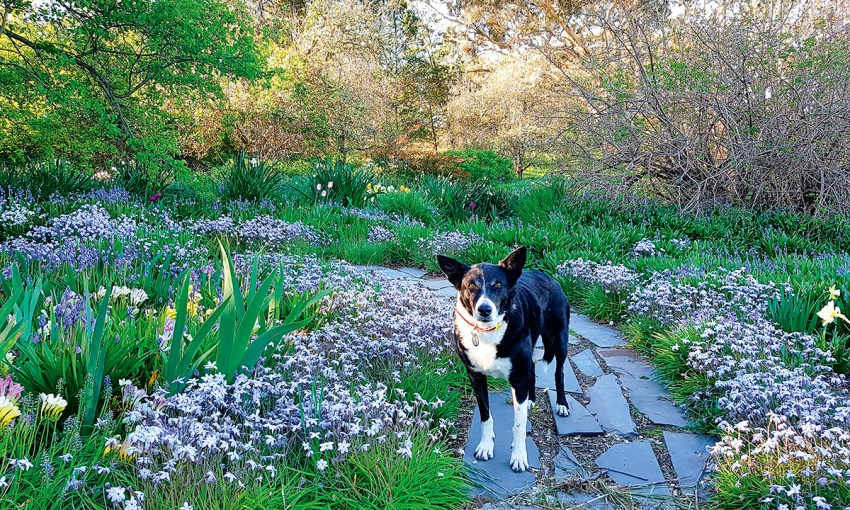Three South Australian gardeners have shared their gardens and raised money for charities through the Open Gardens SA program for more than 20 years.
In the garden: The constant gardeners
At the top of a hill overlooking towering gums and farmland where the only sounds are those of sheep bleating, lorikeets squawking and wind sweeping the hillside, Heather Davey lives in a house near Rhynie, down the road from the Avondale homestead where she was raised.
Set against a landscape that a painter would express in broad strokes, it is surprising to find a garden here that, despite its relaxed, bucolic nature, is devoted to finer details. In this garden, stone pathways lead to small storybook garden views and just an inch below the surface lie many thousands of bulbs that, in spring, will bloom in a vivid song.
By the time Heather opens her garden in September, both the cyclamens and daffodils will be in full flower – some descended from the King Alfred daffodils her grandfather gave her mother Lucy when, as a teenager, a fall left Lucy uncertain if she would walk again.
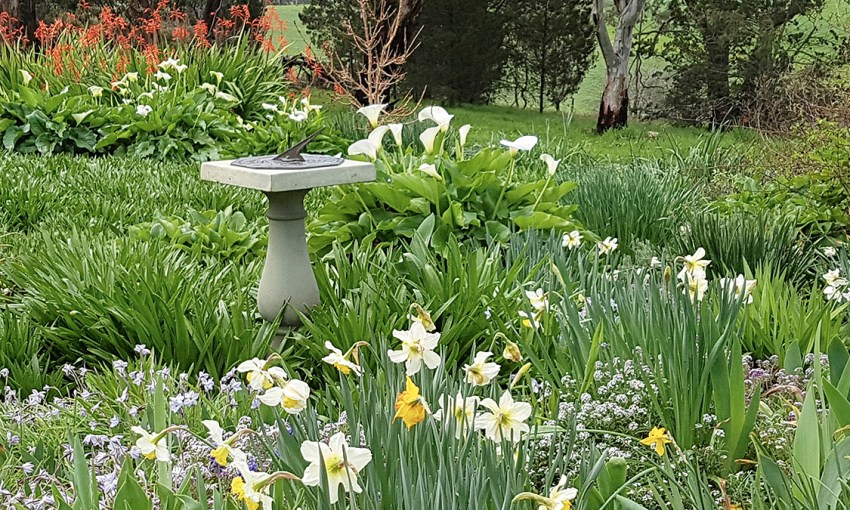
“Daffodils were always her favourites,” says Heather, “and I love them too.”
As Lucy recovered from her accident, she began spending much of her time in the family’s garden. Bulbs that flowered in brief bursts of fragrance and colour were the plants she was most taken with; throughout her life, she would collect and cultivate a great number of varieties, many of which flower in the garden to this day.
Heather has childhood memories of watching her parents — especially her mother — gardening, but her own interest did not set in until adulthood. As a young woman, she moved to Adelaide to work as a primary school teacher.
In 1972, her parents moved out of the homestead and built the house on top of the hill. Heather visited on weekends to help with the garden that, despite Lucy’s initial claims that she no longer wanted a large garden to look after, expanded week by week.
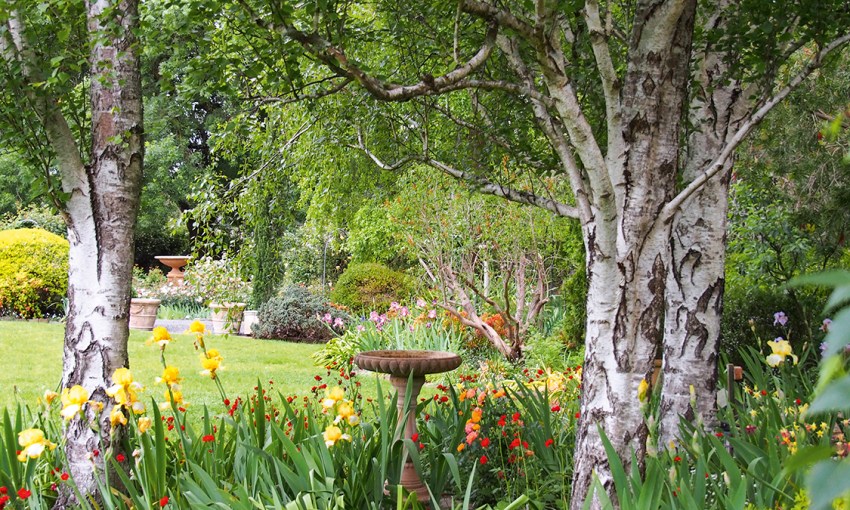
Family members gave Lucy plants that they didn’t have space for. Today, the garden is a living history of sorts where Heather can trace family stories, not only in her parents’ many plants but in her grandmother’s cyclamens and her uncle’s orchids.
The first traces of the garden begin as you turn into a long grey slate driveway that passes ancient olive trees, pines and gums and is framed from early spring with a long carpet of flowers including masses of grape hyacinths, bluebells, daffodils and anemones. The driveway leads to a slope above the house where a grove of silver birches and stone benches look to the garden and the wider landscape. Elsewhere, there is the waterfall and koi pond built in 1992 and a more sheltered cottage garden.
After her father died, Heather retired and returned to the country to live with her mother and, through the garden, their lives had a shared rhythm. They opened the garden for the first time in 2000; and every year since. Following Lucy’s death, Heather has lived in the house and enjoyed the garden with her devoted dog Tasha.
“These days, I need some help with the heavy jobs, and I can’t do all the weeding by myself, so there are always people here helping me,” she says.
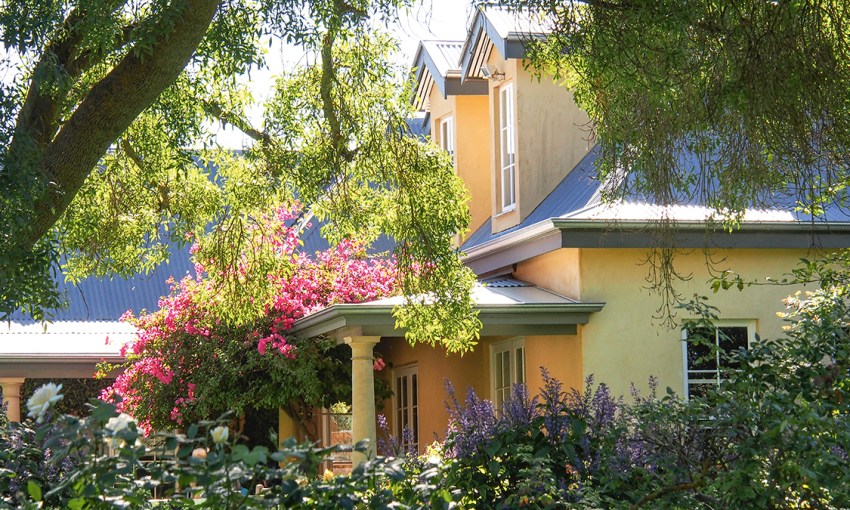
“It’s lovely that people want to be a part of this garden.”
Ruth Irving recalls visiting Avondale shortly after the Daveys began opening.
“They were some beautiful Roman hyacinths growing, which are a smaller variety and have a much nicer, more delicate scent,” she says.
Lucy Davey dug up 10 bulbs for Ruth, which have since multiplied into the hundreds now growing in her garden at Al Ru Farm near One Tree Hill.
Former antique dealer Ruth is a great collector of plants, something that comes across in her sprawling, varied garden, which contains more plants than she can count.
“I just love a lot of colour in my garden all year round and not just in spring and a green garden on its own is not something I’ve ever craved,” says Ruth.
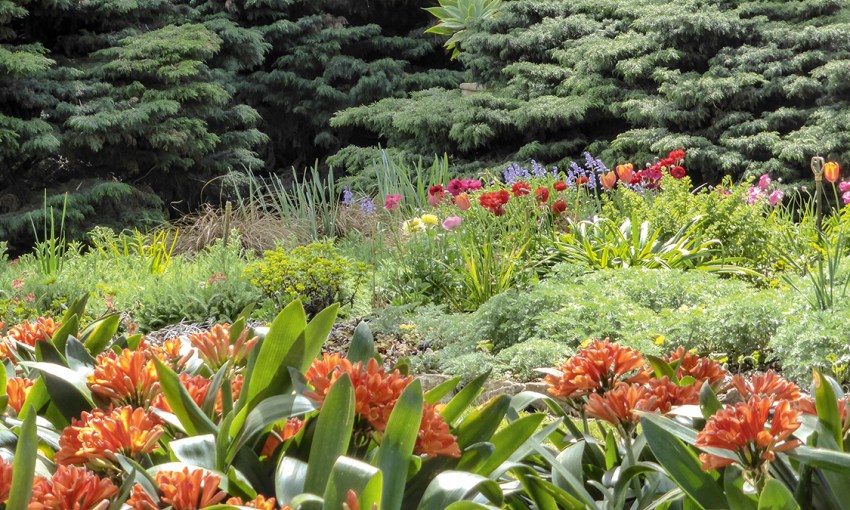
As you drive down the long driveway towards the Al Ru Farm homestead, farmland begins to transition into the rambling 10-acre garden that has continued to expand since Ruth and husband Alan bought the farm in 1981. Inside the house, a framed aerial photograph of how the farm looked then reveals a sparse, dry landscape with a small homestead that is in stark contrast to the property that, today, is a popular bed and breakfast and wedding venue. Ruth first opened the garden in 1986 when it was considerably smaller and less established.
“I wasn’t ready, but I did it anyway. It was a challenge. I love the open garden scheme and I’ve opened every year since. It’s an honour, I love being able to share my garden,” she says.
Today, the garden is so large that visitors to the annual open garden are provided with a hand-drawn map on which sections of the garden are given names such as The Ramble. Beside the lawn along one side of the house, lies the most formal part of the garden where Ruth has spent years trying to protect her roses from local wildlife. To one side of this garden, a lily-pond surrounded by trees and a country-style pergola is a popular photo spot among Al Ru Farm brides. Elsewhere there is a flower meadow, a woodland, and a lake surrounded by native plants.
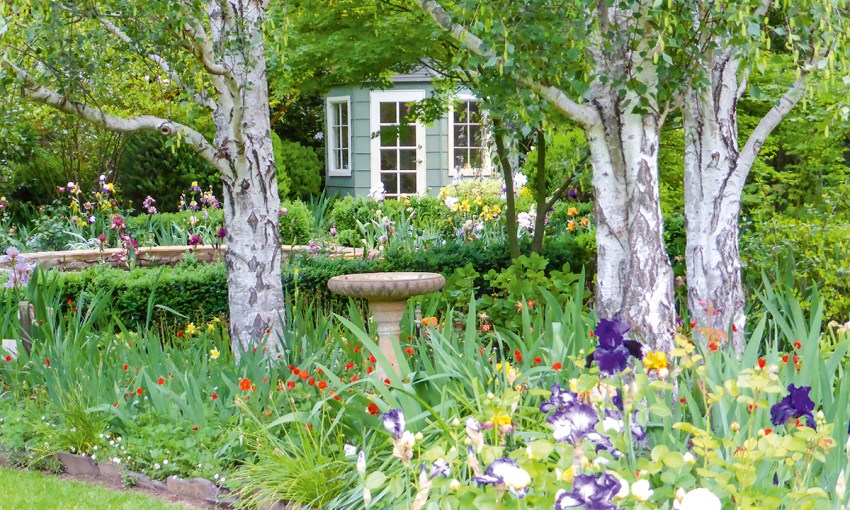
Al Ru Farm is populated by characters as charming as its garden. There is a long-limbed puppy called Lily, the most recent in a long line of English Mastiffs at the farm. Hovering on the kitchen windowsill, a ginger cat is waiting to be fed.
Then there’s the guinea fowl who was raised by the family as a chick and has been confused about his place in the world ever since. Six months ago, the family tried to reintroduce him to their flock of guinea fowl, but he is fast to abandon his own species whenever a human appears. He has a habit of finding visitors to the farm and accompanying them to the front door and inside the house.
“We named him Bird because he needs to be reminded who he is,” Ruth says.
But Ruth enjoys the company of Al Ru Farm’s various residents. Shortly after purchasing the property a neighbour told her that a group of owls were attracted to the pine trees that grew on her property.
“I immediately started planting pine trees and hoped that the owls would come. And guess what? Just recently, they did.”
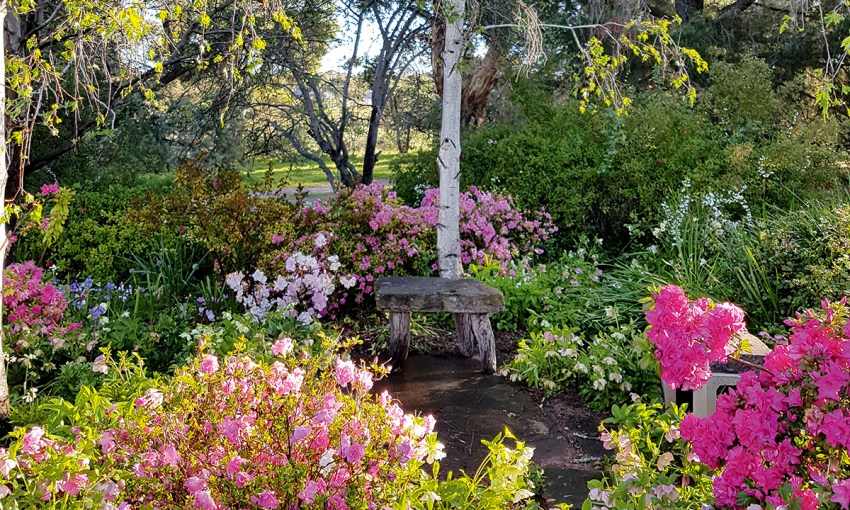
Some gardeners, like Ruth, seem to always have had a vision of a large, rambling garden in their mind’s eye. Others start with a lesser ambition. Perhaps they’re drawn in by a single plant or flower that they want to grow, which slowly, over time, becomes the cornerstone of a garden of great variety, contrast and depth.
When Dianne Michalk acquired a former cow paddock not far from the Gumeracha farm where she grew up, gardening was a new hobby, one she approached with a characteristic curiosity and eagerness to learn. After the house was built in 1986, she began planting many varieties of iris rhizomes — a flower that has always captured her imagination.
“I just love irises,” she says, “the way the flower rises and unfolds, the detail and colours of the petals.”
She soon learned that the flowers were most attractive among other flowers and plants, framed by pathways, or circling around water features. Dianne has always experimented with her plants, and once transplanted her entire collection of irises from one side of the garden to the other. Today, her garden comprises an orchard of fruit trees, silver birches, bottle brushes, Japanese and golden maples, and thousands of flowers — peonies, lilacs, David Austin roses, violets, daffodils, camellias, hydrangeas, and more than 900 varieties of tall bearded irises that flower in a symphony of blue, purple, white and every other colour imaginable, each spring.
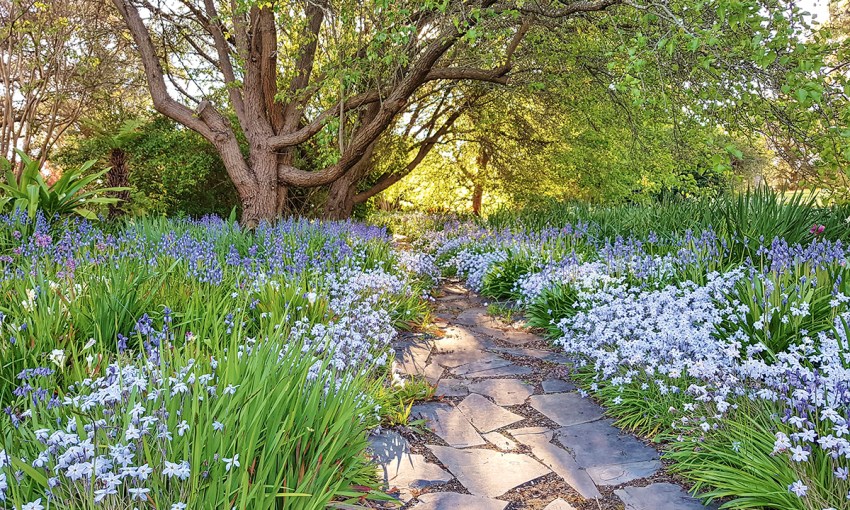
Having recently retired, Dianne now has more time to spend where she has wanted to be for many years — on her hands and knees tending to her plants.
“I’m so used to running out of time on the weekend and rushing to finish everything I want to finish, so far it’s been really good,” she says.
In 2013, Dianne was in her city office when ABC’s Gardening Australia rang to tell her she was one of two finalists for the national prize of Gardener of the Year.
“I got so excited my boss put his head in the doorway to make sure everything was OK. I don’t think much work got done for the rest of the day.”
Soon the news came that she had won the prize. A film crew visited the garden and she was presented with the golden shovel which has hung on her kitchen wall since.
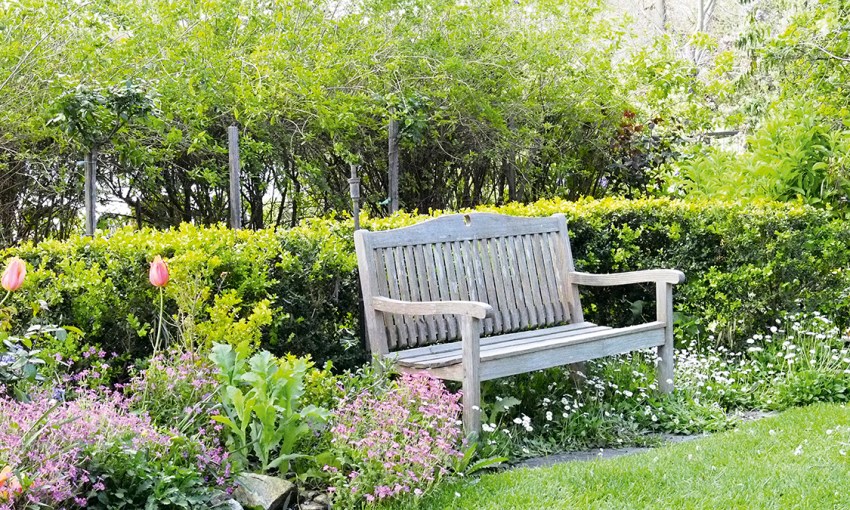
“People who come to my open garden still ask if they can see it,” she says.
Spring 2019 marks the 20th year Dianne has opened her garden, an annual event that she anticipates with excitement each time.
Great gardens often read like a self-portrait of the people who have created them. This is true of Heather’s quiet garden at the top of an idyllic country hill, Ruth’s rambling storybook of colour and contrast, and Dianne’s iris garden planted among long-standing ash trees. Although each garden and gardener are distinct, they are all similarly devoted to opening their gardens every year.
“It’s about sharing something that brings me a lot of happiness with other people and raising some money for charities at the same time,” says Dianne.
For more open gardens: opengardensa.org.au
This article first appeared in the September 2019 issue of SALIFE magazine.



